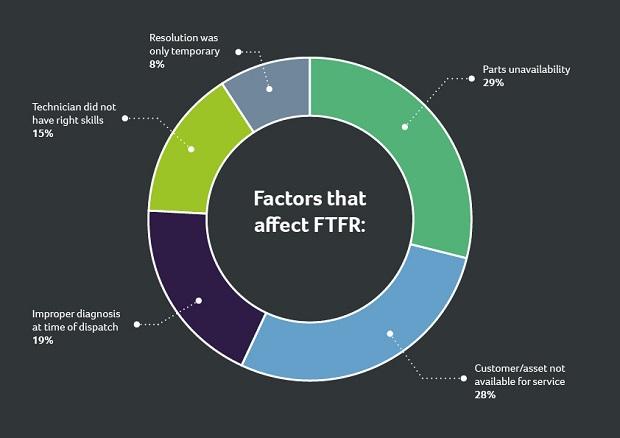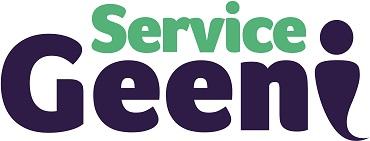Costs are going up. Whatever the cause: war in Ukraine, pandemic, Brexit, shortage of materials & labour, breakdown in logistics networks, energy costs or inflation. Every business is affected by these factors completely outside of their control. But there is one major area Service Management businesses can control and that’s improving their internal efficiencies using First Time Fix Rates (FTFRs) as the key measure, and research shows that this alone can ensure not just survival but positive growth rates too.

Research from the Aberdeen Group found the top 20% of service-related businesses have a First Time Fix Rate of 88%, with those considered as best in class achieving a FTFRs of +98%.

Whereas the bottom 30% of companies have first-time fix rates of 63% or less. Demonstrating the link between efficiency and the success of a business.
High FTFRs are proven to not only increase customer satisfaction levels but also to improve employee satisfaction scores, resulting in higher job retention rates in a constantly challenging recruitment market. Furthermore, businesses who achieve good FTFRs grow revenues by a minimum of 4% annually and those with excellent FTFRs even more.
Cost reductions you can control
Before you can increase efficiency, you need to know some of the main drivers, so that you can tackle each of these areas to make improvements. FTFRs are affected by the following factors:
- Parts unavailability – 29%
- Customer/asset not available for service – 28%
- Improper diagnosis at time of dispatch – 19%
- Technician did not have right skills – 15%
- Resolution was only temporary – 8%
Service Geeni’s service management software enables businesses to efficiently manage all the factors driving First-Time Fix Rate. Investment in technology is vital to enable optimisation of all the different variables to achieve efficiency.
Service management software needs to capture and maintain an extensive set of constantly changing data including:
- engineer skillset
- van stock
- parts inventory
- locations and routes
- customer contract requirements
- planned and reactive service visits
- asset status data
- contract SLAs and more
Management boards might assume such significant efficiency gains must come at a big ticket price for service management software. But the fact is good service management software is critical to help increase efficiency, improve profitability and boost revenue potential. Building a business case for the right service management technology to support Service Managers is vital.
Simple improvement value calculation
For Example:
- If you had 50 Engineers
- Averaging 2 jobs per day
- Paid a wage of £20 per hour
- Improving FTFR from 70% to 80% equates to a saving of £2,080. Which is saving labour costs of £41,600 in second visits.
- If 50% of the hours saved by improving FTFRs was assigned to new jobs with a £400 average revenue per job, this would increase revenue by £104,000 per year.
When you crunch these basic numbers, you realise how working on your FTFR can deliver efficiencies, profitability and capacity for growth.
Service Geeni’s service management software is an integrated platform, which gives technicians access to critical service data, ensuring parts inventory demands are based on planned service visits and essential parts availability remains high, dramatically improving FTFRs.
Additionally, Service Geeni service management software gives technicians working remotely complete visibility of contract requirements, asset status and job history, outstanding jobs by site, van stock, parts across the network and upcoming scheduled maintenance. Improving transparency and collaboration between all aspects of your operations gives Service Managers the tools they need to make significant improvements in FTFR.
For those businesses who achieve a consistent First-Time Fix Rate of over 70%, customer retention can be +86%. Compared to those with a First Time Fix Rate of less than 70% which see customers retention drop to below 76% — a decrease of 10%.
 There’s so many marginal gains when it comes to efficiency improvements that it can be difficult to know where to start. Our guide provides you with practical insights and advice on how to achieve this.
There’s so many marginal gains when it comes to efficiency improvements that it can be difficult to know where to start. Our guide provides you with practical insights and advice on how to achieve this.
To find out more about how to calculate measure and improve every aspect of your First Time Fix Rate to drive measurable improvements download Service Geeni’s free guide.




Comments are closed.